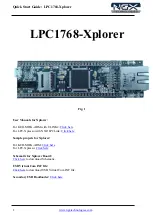
S1834 Tiger 133
41
memory, and most, but not all, modern PCs have additional (external) cache
memory. When the CPU requests data, the system transfers the requested data
from the main DRAM into cache memory, for even faster access by the CPU.
The External Cache field may not appear if your system does not have external
cache memory.
CPU L2 Cache ECC Checking
Enables Error Checking and correction (ECC) on the L2 cache onboard the
CPU.
Quick Power On Self Test
Select Enabled to reduce the amount of time required to run the power-on self-
test (POST). A quick POST skips certain steps. We recommend that you
normally disable quick POST. Better to find a problem during POST than lose
data during your work.
Boot Sequence
The original IBM PCs loaded the operating system from drive A (floppy disk),
so IBM PC-compatible systems are designed to search for an operating system
first on drive A, and then on drive C (hard disk). However, modern computers
usually load the operating system from the hard drive, and may even load it
from a CD-ROM drive. The BIOS now offers a large number of boot devices
and boot sequence options.
Swap Floppy Drive
This option allows you to swap the floppy drives if more than one is installed.
It allows you to switch the A: and B: to make B: become A: .
Boot Up Floppy Seek
When Enabled, the BIOS tests (seeks) floppy drives to determine whether they
have 40 or 80 tracks. Only 360-KB floppy drives have 40 tracks; drives with 720
KB, 1.2 MB, and 1.44 MB capacity all have 80 tracks. Because very few modern
PCs have 40-track floppy drives, we recommend that you set this field to
Disabled to save time.
Boot Up NumLock Status
Toggle between On or Off to control the state of the NumLock key when the
system boots. When toggled On, the numeric keypad generates numbers
instead of controlling cursor operations.
BIOS
















































